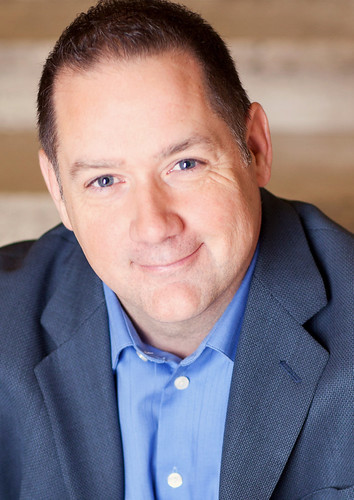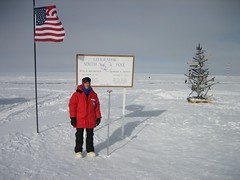
Critiquing the young can sometimes seem to be a rite of passage for older generations. Think of the last time you heard something like this: “20-somethings – they’re mooching off their parents and taking forever to get their careers started. They don’t take marriage seriously anymore, and helicopter parents keep them immature.”
But according to Rick Settersten, professor of human development and family sciences and endowed director of the Hallie Ford Center for Healthy Children and Families, those generalizations and criticisms do no service to young adults. And they miss the point, especially in 2010. Young adults are facing a different set of challenges than their parents did.
Understanding these differences and challenges can be good for everyone, Settersten and coauthor Barbara Ray argue in their new book, “Not Quite Adults,” which was published this month by Random House. For the book, Settersten and Ray draw results from nearly two dozen national data sets and more than 500 in-depth interviews with young adults, all gathered over 10 years of multidisciplinary research.
We recently had the chance to talk with Settersten about the book, their motivations for writing it, and some of the important things he and Ray learned along the way.
Settersten will be talking about Not Quite Adults and signing books at OSU’s Corvallis Science Pub on Jan. 10, Powell’s in Portland Jan. 12 and the OSU bookstore Jan 13. More information about his appearances can be found on the Not Quite Adults website.
How did this book come about?
The research at the heart of our book grew out of a network funded by the MacArthur Foundation. We were a dozen scientists from different fields—sociology, psychology, economics, public policy—brought together to take a fresh look at the period of life between 18 and 34. The research was so socially relevant that we wanted to take some of our messages to the streets.

What were some of your motivations and goals in writing the book?
This period of life has seen extraordinary changes. We’re trying to help young people, their parents, educators, and policy makers understand what’s going on and what to do about it. Much of the public conversation about young people today is negative, and so much of our research evidence runs counter to it. With this book, we hope to redirect the conversation and make it productive.
We hope young people will see how the struggles they’re having are not just their own, or their own doing, but are rooted in larger social and economic conditions and shared by many others. We hope that parents will be able to see their youth in a brand new way, and that they’ll gain some insights into the world their child is trying to navigate.
What are some of the stereotypes about young people you counter in “Not Quite Adults?”
Young people are generally not mooching off their parents. That’s not to say that parents aren’t helping a lot in getting their children launched. But most parents, I think, aren’t resentful of the help they’re giving.. They’re mainly worried. They want to make sure their kids succeed, and the stakes are high. Of course, it’s always been true that many parents don’t have the financial resources or the know-how to help their kids. But it’s now a crisis for the middle class, too, in that the recession has altered their resources and options.
We need to let go of the idea that living at home is bad. It can be a smart thing for young people and parents, especially if they’re from families that don’t have a lot of resources. Living at home may be what allows a young person to pursue a college degree or take a no-pay or low-pay internship—things that will improve their chances on the job market. Or, it can allow them to build a nest egg for a stronger launch later on.
And the helicopter-parent thing too: In its extreme form, it’s clearly bad. Parents need to set boundaries. But the old school of hard knocks parenting—18 or 21 and you’re out—doesn’t work well today. The financial and emotional support of parents is crucial to the success of children. We should be far more worried about uninvolved parents.
And what about marriage?
Young people today want to have their ducks in a row before they get married. Young people postpone marriage because they’re trying to get degrees and some work experience under their belts first. They also want to have enough experience in relationships to know they’re choosing the right person to marry. Young people haven’t abandoned marriage as much as they’ve delayed it.
What happens when these kids have to start investing in their own kids? Is there a downside to starting later?
I don’t see one. If delayed marriage and parenting come with more careful choices about whom to marry and when to parent, and if credentials and work experience are acquired along the way, you have a recipe for more effective and resourceful parenting. We should be far more worried about young people who parent too soon.

How did you get interested in this topic to begin with?
I actually got started in the field of aging. I was eventually drawn to study the early adult years because in order to understand where people end up in late life, you have to understand where they started. What’s going on with young people today will have an effect on their future decades, just as every generation before this one has carried the imprint of their own times.
We would do well to remember that this is a period of life that’s been fundamentally transformed. That’s not going away.
These years are also an interesting window into how other periods of life are being similarly reworked—think about middle age and old age. Parents and grandparents of young adults today surely feel the changes around them too. It helps to keep in mind that the rulebook for life has been shredded for everyone, not just young adults.
Is there anything you’d like to add?
Parents and kids still wonder if a college education is really worth it. It is. But it’s also important to be smart about those choices given today’s world.
There are also some loud alarms sounding in higher education. We’ve done much to increase access to higher education, but retention and graduation rates are truly abysmal. And let’s not forget about high school dropout rates, which are still very high and somehow out of the public eye with the emphasis on “college for all.” In a knowledge economy, there are few stable places to hook in kids who aren’t college bound, and so many who are in college are floundering or failing. These are serious problems.
The fact that a delayed transition is good for everyone doesn’t mean that everyone is doing it, or doing it well. This book is, we hope, not only a reminder of what is good and right with young people today, but also a wake up call to what is worrisome and what we can do better.






